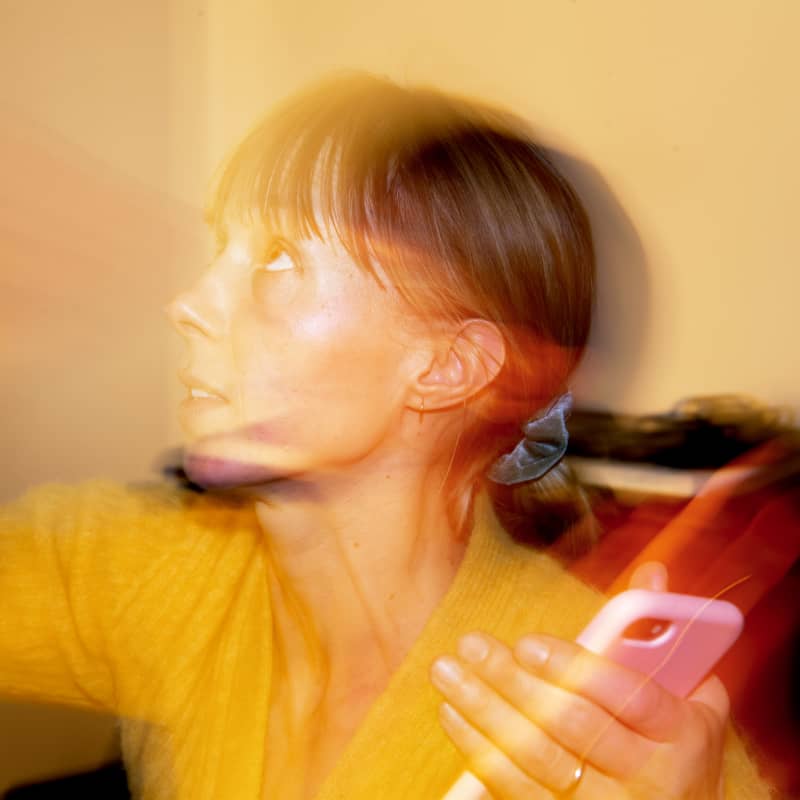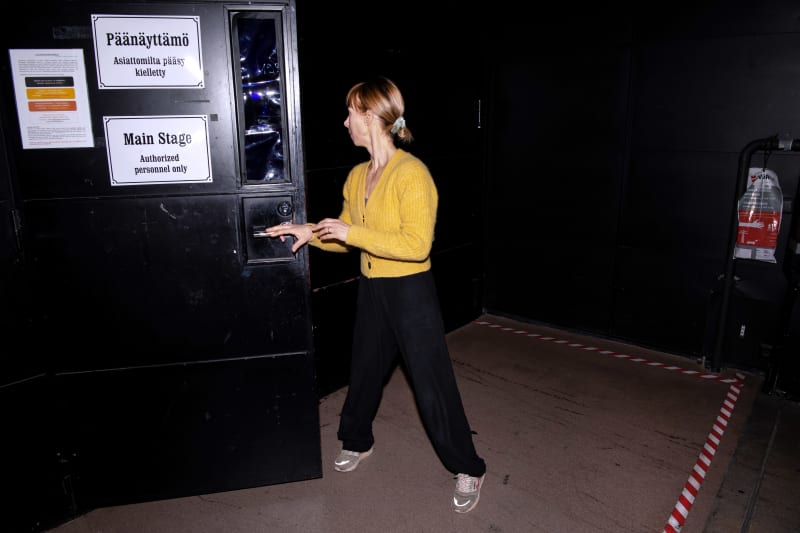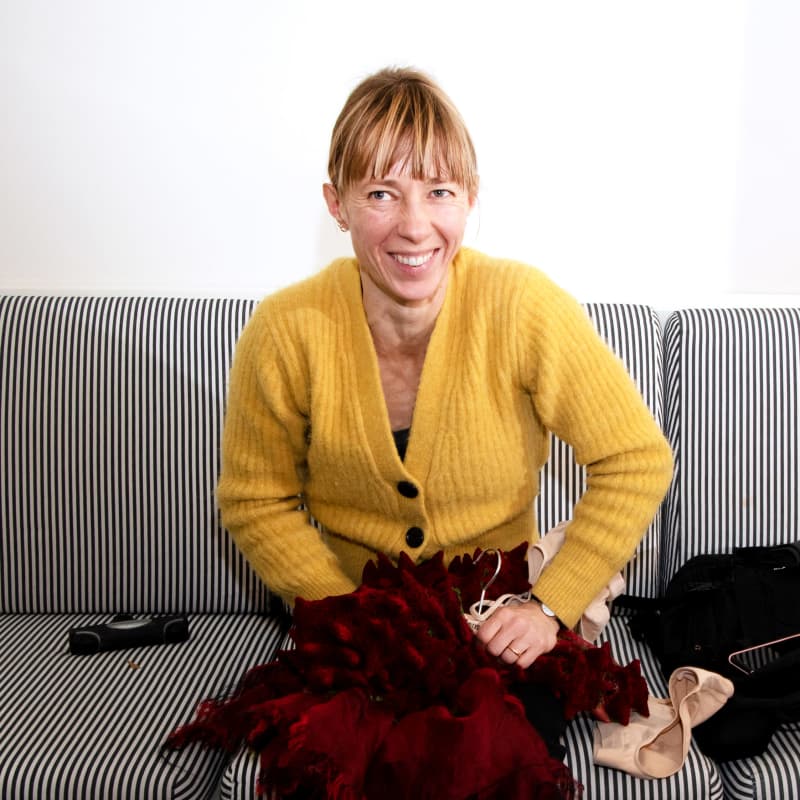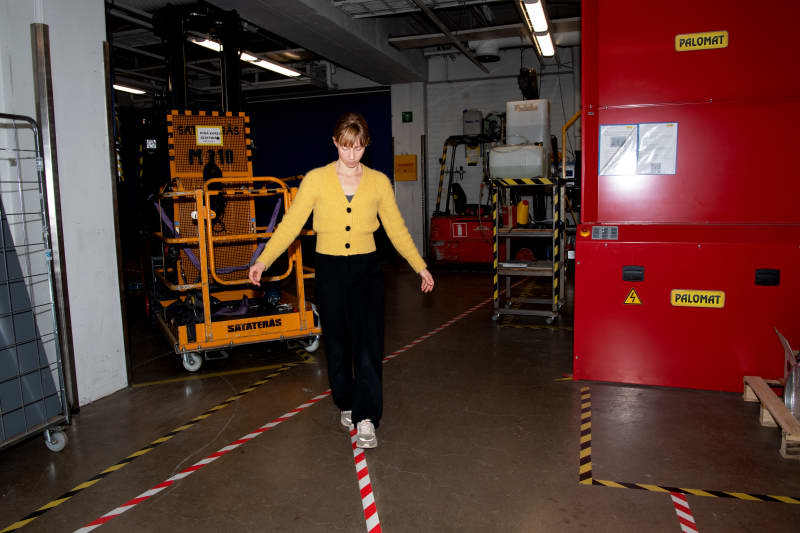Circus artist Kati Pikkarainen has known fear since childhood. Although his job is life-threatening, it wouldn’t be possible without a good fear.
He was anxious for a while. He thought that a horrible place. He was sixteen and had gone to France alone without knowing the language.
Still, this was exactly what he wanted. Get out of the house as quickly as possible.
\”We drank and fought at home\”
The world was pushed by the difficult situation at home. Pikkarainen’s father was a violent alcoholic. Childhood was survival.
– It was very unsafe at home, there was drinking and beatings. Our family had everything bad that alcoholism can imagine, says the now 40-year-old Pikkarainen.
Pikkirainen’s heart still starts pounding at the mere thought.
– Lovely mother, terrible father. Mom always made sure there was food on the table.

A regular hobby, circus school, brought basic security. Pikkarainen started it at the age of eight. The talent became apparent quickly, and he participated in the first real circus performances at the age of 13.
At the beginning of high school, the daughter announced to her parents that the circus would become her profession. That was fine, as long as he took care of it himself. A French teacher from Espoo’s Suvela Circus School came to the rescue, advising on a good degree program in France and helping with the application process.
After the entrance exams, Pikkarainen found out that he was one of the few chosen among 900 applicants. Studies at the École Nationale des Arts du Cirque circus school in Rosny-sous-Bois in Paris began the same year.
The nice-sounding French-speaking circus school was a new beginning – a promise of better things.
Pikkarainen is his own boss
On a gray Monday in November, it’s hard work. Pikkarainen walks along the labyrinthine corridors of the Finnish National Opera to the side door of the main stage and carefully opens it. For pictures, it would be good to get somewhere other than the dressing room where the interview is to be done. They say you have to open the doors and ask, even though it was originally said that there is no other way to go.
– You always have to break the rules a little, Pikkarainen grins.

A *CircOpera 2.0* performance combining circus and opera is being built on the stage, but the staff gives permission to come to the side.
Pikkirainen starts to stretch, after which she lifts her body in a sitting position on her hands and slowly turns herself into a handstand. That’s just how it goes. Pikkarainen has perfect control over her body.
In *CircOpera* Pikkarainen is one of the eleven circus artists. His turn to get on this same stage is right at the beginning of the show. He has defied gravity as a circus artist for over twenty years.
– I like to demand a lot from myself, to be my own boss.
A huge French student boy was found at the circus school
Although the student dormitory in Rosny-sous-Bois was dreary, the circus school a couple of hundred meters away was something else.
– It was a great place. The setting was amazing, and there were amazing teachers. It gave me the feeling that this can’t be true, Pikkarainen recalls.
The first year of study was spent trying different sports, for example trampoline and trapeze. Then you had to decide what to specialize in. Pikkarainen had drawn attention to himself compared to the huge French student boy. The interest had clearly been mutual. Couple acrobatics was suggested as a sport for them.
– There was no psychological reflection on how to do this vault, but the idea was that if you do it enough times, it will become good.

Communication was its own chapter as the studies progressed. Pikkarainen didn’t speak French, and Cathala didn’t speak Finnish or even English.
– And we had a Polish teacher. There wasn’t much discussion about it.
Now we have more than 20 years together – as an acrobat duo and as spouses. The couple started dating after graduation in 2005. They even found a common language when Pikkarainen learned French.
Now the couple spends their everyday life in France filled with two small children and circus arts. The duo performs regularly and directs productions for, among other things, the circus group they founded, Cirque Aïtal. They have been performed hundreds of times in different parts of the world.
\”Sometimes in the upper air you think that I really don’t have that seat belt on\”
In *CircOpera 2.0*, which premiered on Friday, November 25, Pikkarainen and Cathala have their own scene. The pilot picks up speed, rises to a handstand on the subordinate’s hands, after which the subordinate launches the pilot into the air. After that, the pilot does one and a half volts and lands on the underling’s arms.
The trick is full of real danger spots. In the event of an accident, Pikkarainen could be seriously injured, or in the worst case, lose his life.
– Sometimes in the upper air you think that I really don’t have that seat belt on. For example, a safety belt is a must in the trapeze. It’s not even discussed.
According to Pikkarainen, the most important thing when performing a trick is to try not to really think about anything. When Pikkarainen stands with her hands above Cathala in the middle of the performance, they don’t look each other in the eye – or if they do, it’s a sign that something is wrong. Instead, Cathala looks at Pikkarainen’s legs and ankles. From there you can get the necessary information about what needs to be done.
Communication takes place with small movements when the couple holds each other’s hands. During the performance, balance is sought and let go. It is largely a matter of trust. If something goes wrong, the aftermath can be ugly.
There are many variables. For example, the opera stage has to take up more space than usual, which affects the pace. The change repeats itself and in CircOpera affects, for example, the force with which Pikkarainen hits Cathala.
– The steps have been carefully calculated and every detail carefully agreed, but we are not machines.
Once upon a time, Cathala injured her shoulder in the middle of a performance, due to which the next trick was not performed.
Knock on wood, you can say that nothing worse has ever happened to the couple. Accidents happen regularly in the circus, for example the aerial acrobat of the world-famous Cirque du Soleil died after falling in the middle of a performance in the United States in 2018.
As light and easy as Pikkarainen flies above Cathala, she also thinks about the possibility of an accident.
– Sometimes I’m really nervous about performing and I do things too quickly. Then there is a greater chance of failure.
A good fear helps with acrobatics
All circus performers have some kind of relationship with fear. Kati Pikkarainen defines her fear related to pair acrobatics as a *good fear*. In practice, defining the feeling is difficult. It’s something that Pikkarainen has made a habit of telling her spouse before performances to be careful.
At least that fear is not the same as the fear he experienced in childhood or the fear he feels on the plane. An acrobat flying high in the air without a safety belt has such a bad fear of flying that he once left the plane before takeoff. Pikkarainen had learned about the storm waiting at the destination.
As an acrobat, Pikkarainen is the driver there, as a mere passenger on the plane without the opportunity to influence the situations that come his way.
Pikkarainen is convinced that a little fear at work helps improve performance.
– I would say that on the day when such a good fear no longer exists, it would be worthwhile to consider stopping the big tricks. A little fear is like concentration, and it’s good for acrobatics.

Confidence overcomes fear and anxiety
The year Pikkarainen turned 19, his father died. That started an emotional storm.
– The very first thought was that now it is easier for the mother.
– When I was younger, I always thought that it was going to die, but then when it happened, I missed it terribly.
Pikkarainen stayed in France, even though returning home was on his mind. Afterwards, he feels that the couple of years after his father’s death passed like a blur. Pikkarainen remembers going to circus school, but the details are obscure.
In the end, the decision to stay turned out to be one of the best in life. Fear and anxiety are nothing compared to the confidence he has found.
– Victor is a strong man physically and mentally, whole at heart.

In the life of a couple, love and couple acrobatics complement each other. Every wild jump on the circus stage could be described as a leap of faith or a leap into the unknown, if the pilot and subordinate were not bound by complete trust.
Confidence in life overcame fear also a year and a half ago, when Pikkarai was faced with great sadness. His mother died.
The sadness was also accompanied by a strong experience of comfort. Pikkarainen realized that this is exactly how her life is going.
When Pikkarainen jumps as high as possible and lands firmly on the ground next to her spouse after the aerial flight, the fear is gone.
*You can discuss the topic until 23:00 on Monday, November 28.*
